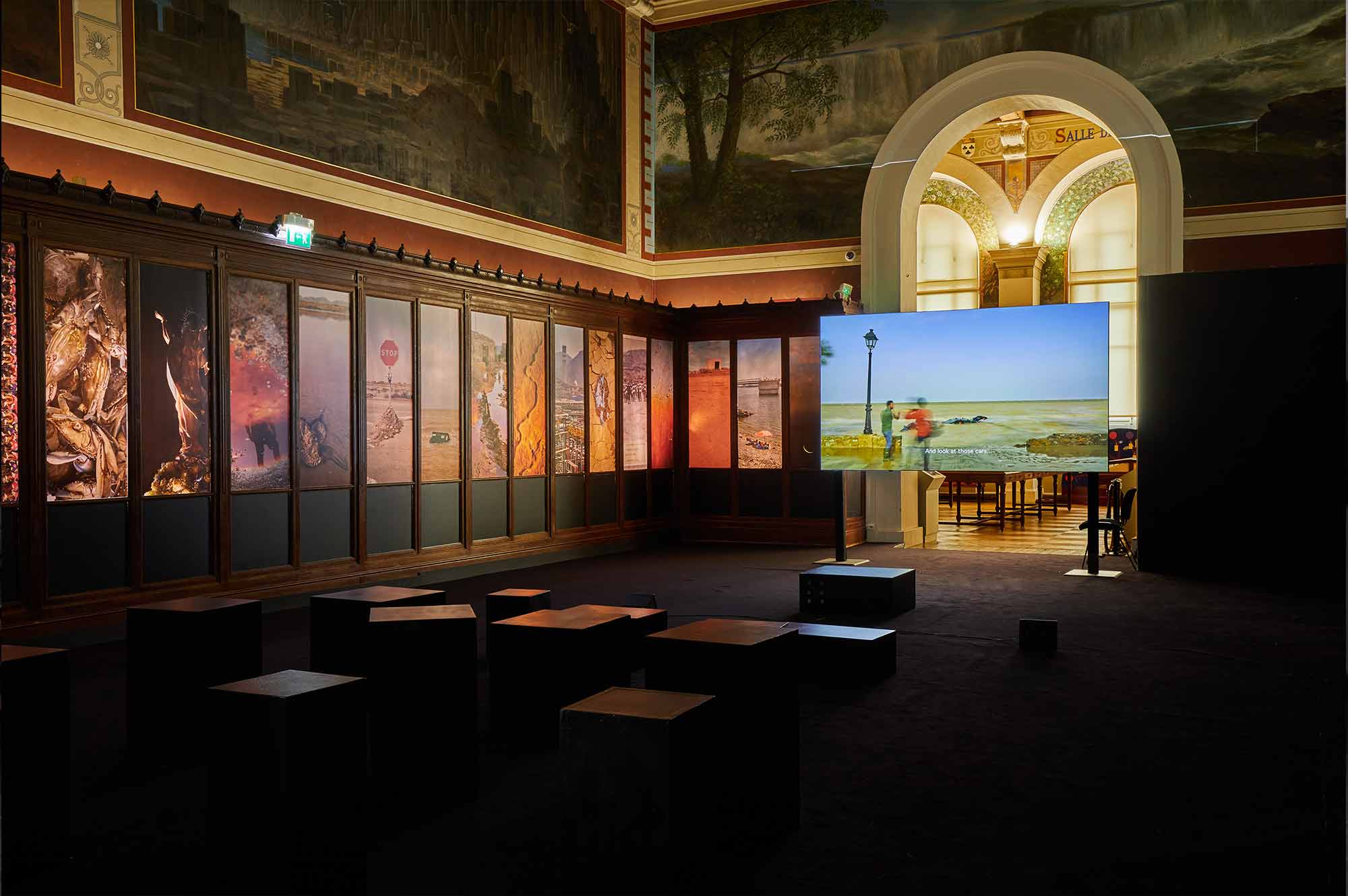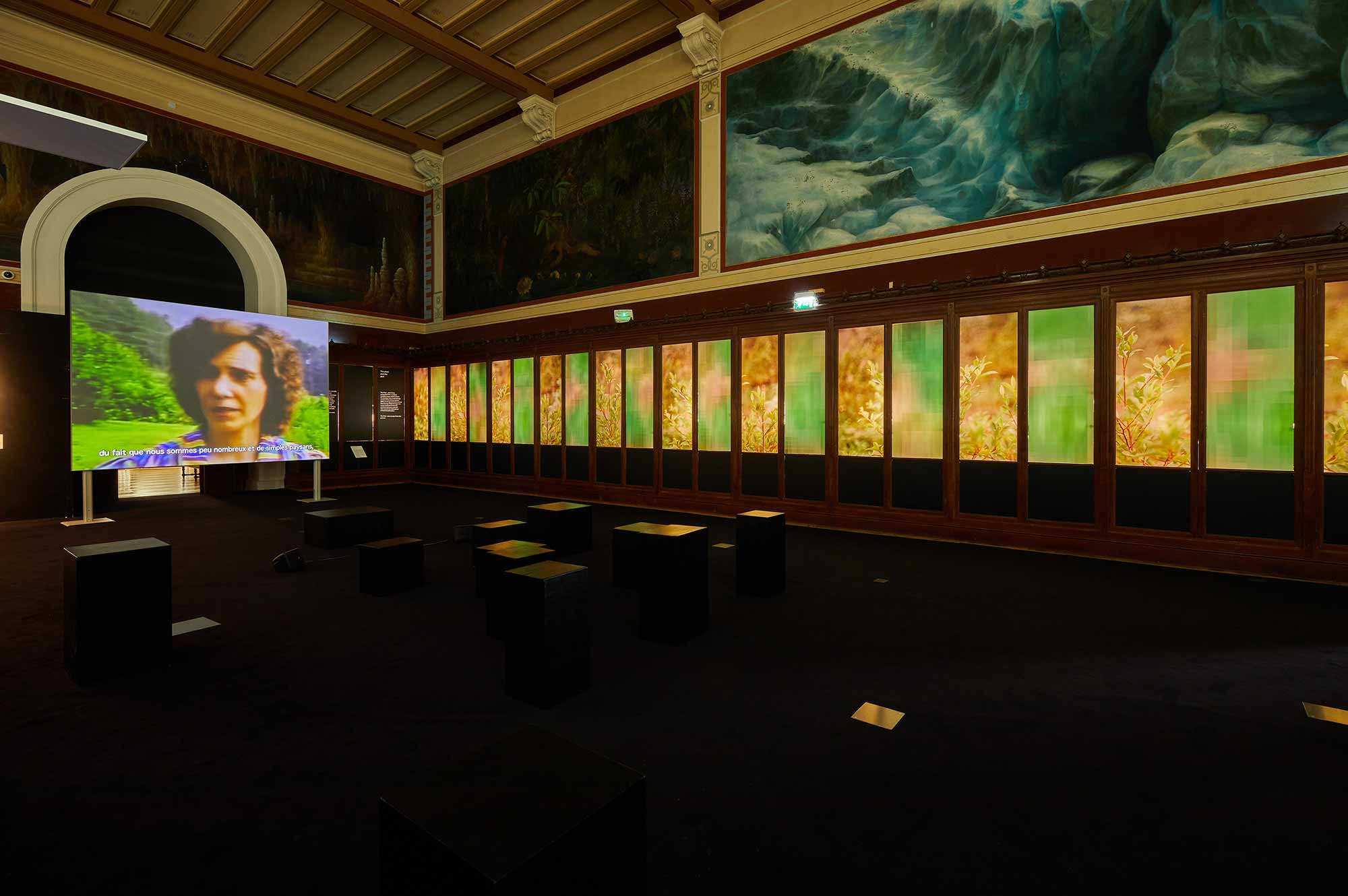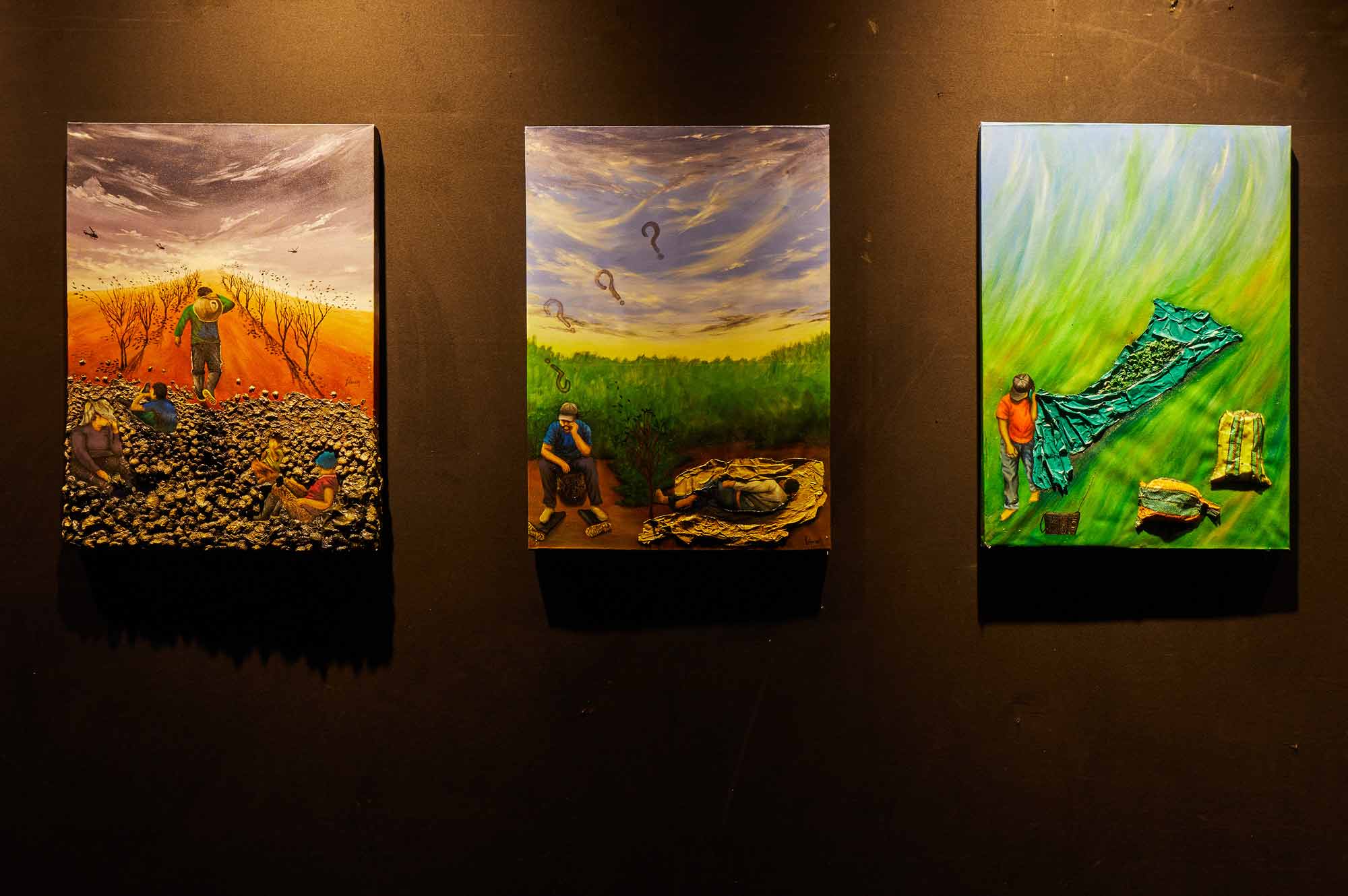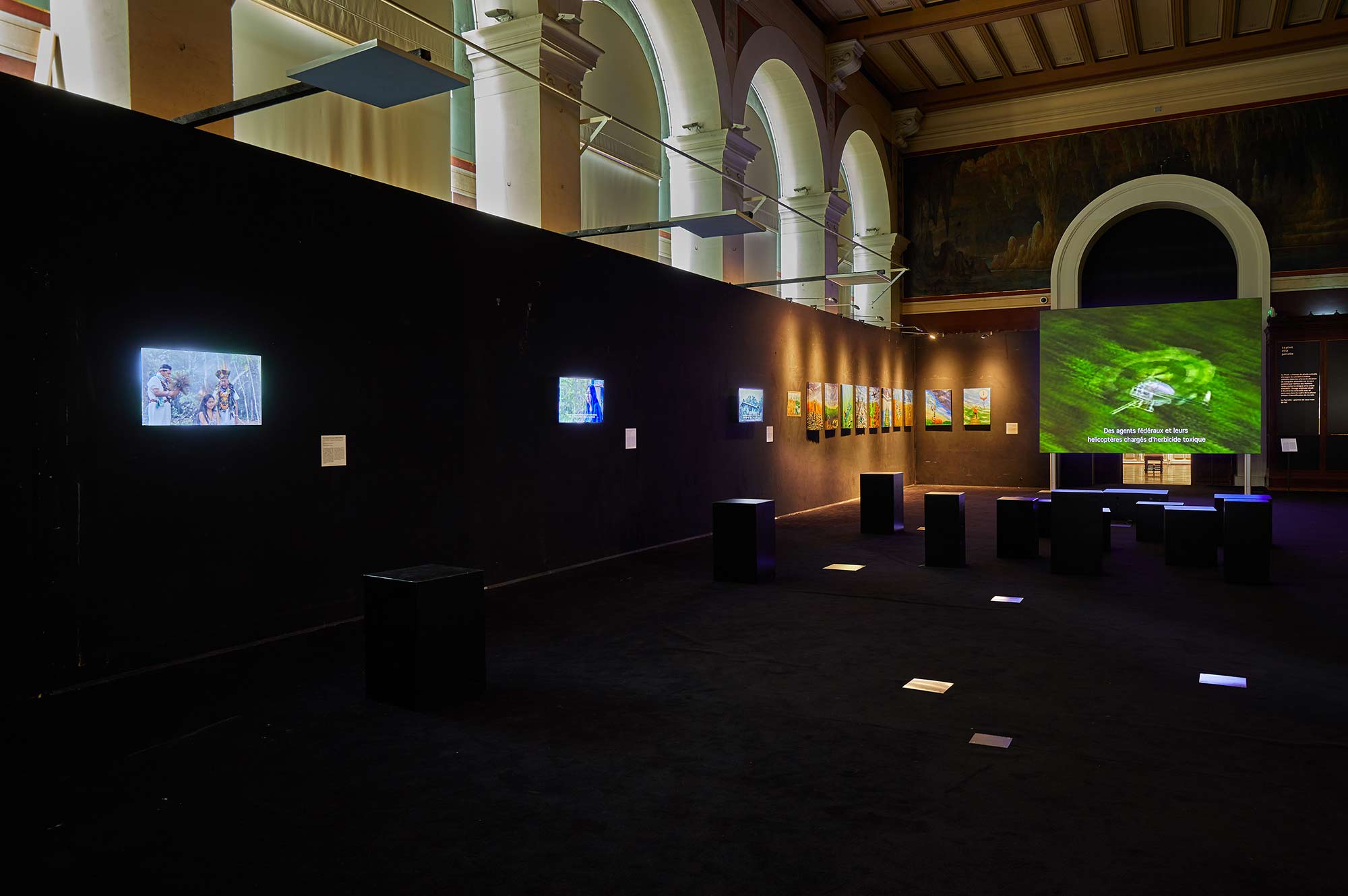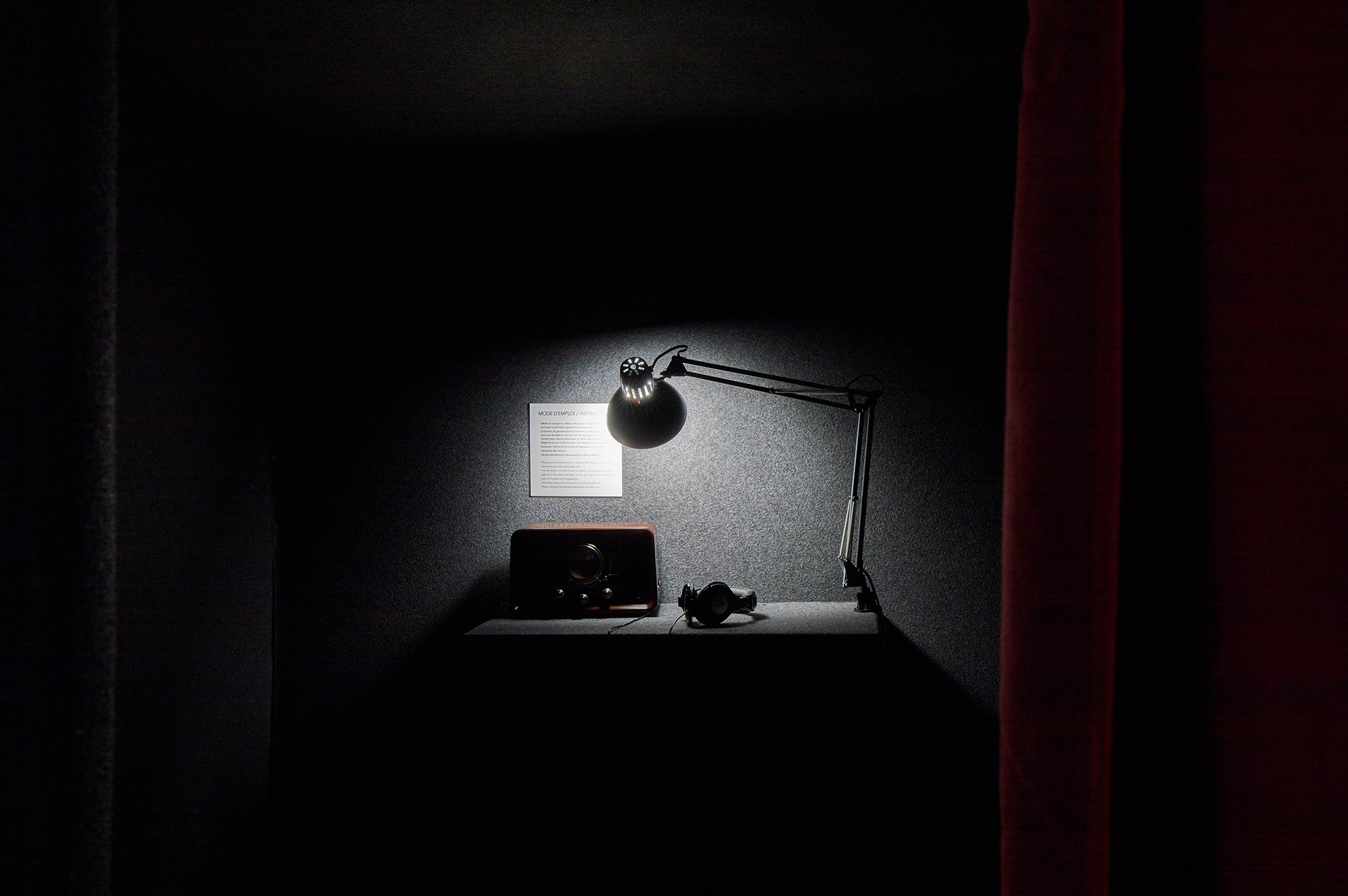Isabelle Carbonell (1985, US/BE/UY ) Hannah Mezaros Martin, (1986, IT/US), T.J. Demos (1966, US) with Martin’s project in further collaboration with Ñambi Rimai Pan Amazon Media Collective, Yésica Flores Arroyo and Edinson Arroyo Mora
The Center for Creative Ecologies, directed by Professor T. J. Demos (b. 1966, US ) at the University of California, Santa Cruz, researches the intersection of experimental art and aesthetic practice, political ecology, and environmental justice. The aim is to develop speculative, practice-based, and arts led interdisciplinary research tools to critically address and creatively negotiate environmental and climate concerns in local, regional, and global fields. The Center addresses environmental matters of concern including human-related climate breakdown, where ecology necessarily expands to intersectionalist networks that comprise socio-political and techno-economic climates, racial and sexual assemblages, and slow and structural violence. Organising conferences, speakers’ series, exhibitions and film screenings, the Center also regularly hosts and supervises international post-docs and researchers.
CENTER FOR CREATIVE ECOLOGIES (Isabelle Carbonell, Hannah Meszaros Martin, T.J. Demos) (collectif, États-Unis)
Commissioned by Manifesta 13 Marseille
Supported by Luma Foundation
Courtesy of the artists
War ecologies call forth not just mutuality but collapse, survival within violence. Conflict involves corporate extraction and militarised assaults on environments and environmentalists, while multispecies life and coexistence fall under grave threat. In its curatorial presentation, the Center for Creative Ecologies offers two artistic case studies asking what kind of pluriverse is possible in the face of different kinds of socioecological violence? The first study addresses the criminalisation of nonhuman life in Putumayo, southern Colombia by Hannah Meszaros Martin; the other considers sci-fi surrealism and extinction in Mar Menor, a saltwater lagoon in southeastern Spain, by Isabelle Carbonell. These comprise part of the Center’s ongoing research project Beyond the End of the World, which seeks out spaces of hope emerging from geographies of despair. War ecologies identify not only neoliberal enterprises using climate breakdown to introduce authoritarian politics, but also struggles – human and more-than-human – for ways to transcend the forces of socio-economic inequality and politico-environmental calamity.
Isabelle Carbonell, A Mirror of the Cosmos / Un miroir du cosmos, 2020
Single-channel video projection
90’
Supported by the Princess Grace Foundation
Courtesy of the artist
A Mirror of the Cosmos is a 90-minute sci-fi documentary which explores how the Mar Menor lagoon, located in Southeast Spain and separated from the Mediterranean by a thin slice of sand, went to the brink of extinction and beyond. The film investigates the ways human, blue crab, algae, jellyfish, nitrates, mining deposits and other nonhuman histories in Mar Menor deeply intertwine to tell the larger story of capitalism’s extractive, cumulative, effects on the environment over time. The lagoon is a microcosm that tells a complex story of the so-called Anthropocene, or ‘the Age of Man’. The film decentres the human and foregrounds the lagoon, the surrounding mountains, the mine tailings, the algae and other more-than-human actors in an attempt to portray an ecosystem in flux. Ultimately, it asks what kinds of futures are enabled by this shift in watery relations?
Isabelle Carbonell, Portal Blooms, 2020
Multi-media stereo audio installation
Design and sound recording: Andres Camacho
Programming and electronics: Steven Trimmer
Courtesy of the artist
Portal Blooms is an interactive listening booth where visitors encounter a radio they can tune to various stations, each tethered to an imagined future in Mar Menor. Lagoons like Mar Menor are fractal connectors, tying together entire continents, civilisations past and present, humans with nonhumans, sediments with atoms. Water-based ecosystems launch us into a different type of world-making, where the assemblage of a lotic ecosystem ‘generates not a singular knowledge of the world but a world multiple’ (Omura 2018). As such, Mar Menor is a prime site for multiple portals to other worlds, other ways of thinking, other futures. A portal can bridge two worlds, can weave history with the future, but it can also be a rupture.
Hannah Meszaros Martin, Falta de Luz / Manque de lumière / Lack of Light, 2020
Single-channel video projection
20’
Direction, concept and production: Hannah Meszaros Martin
Editing: Manuel Correa and Hannah Meszaros Martin
Sound design: Emil Olsen
Interview ‘Taita’ conducted in collaboration with Andrés Monzón-Aguirre
Archival consultant: Emily Coxe
Courtesy of the artist
The film Falta de Luz is a chapter in a longer film project that questions visual representations of environmental violence as it has been woven into political violence. Falta de Luz focuses on the legacy of the legally sanctioned systematic eradication of the coca plant in Colombia via aerial fumigation with the herbicide glyphosate. The film examines the history of fumigation before it arrived in Colombia’s landscapes, using footage gathered from the DEA (US Drug Enforcement Agency) archive. The footage evidences early eradication experiments using herbicides, which the US conducted in their own national parks in the early 1980s – an act that has since been forgotten. This footage reveals how US strategists conceived the war on drugs as a war on the natural world, a logic that was then transplanted to the forests of Colombia.
Hannah Meszaros Martin, Memoria ambiental and the future archives of war / Mémoire environnementale et les archives futures de la guerre, 2020
In collaboration with Ñambi Rimai Pan Amazon Media Collective, Yésica Florez Arroyo and Edinson Arroyo Mora
This is an ongoing archival project centred around the memoria ambiental (environmental memory) of the war in Colombia. The archive looks at different practices of documentation that capture the memory of the earth. Based on an investigation of Colombia’s unfolding moment of transitional justice, the image archive speculates about the role of the image in situations of environmental violence and future forums of justice more generally. The presentation includes a selection of short films and paintings created by artists from Putumayo, southern Colombia. By creating an archive, it opens discussions of evidence, memory and transitional justice to include the natural world as a subject that has also experienced the violence of war. If we begin to see the dynamics of political and environmental violence as inherently entangled, then an archive of images can help make injustices visible and justice possible. It can, moreover, give substance to the unnamed, the disappeared, the erased and the ruined.
Ñambi Rimai Pan Amazon Media Collective, IACHACHIDUR / El Maestro (Participatory Documentary) / IACHACHIDUR / Le maître (documentaire participatif), 2019
TV monitor, HD
11’
Courtesy of the artist
This documentary is a portrait of Taita Paulino Mojomboy. He is a healer, a spiritual and political leader who has been able to use ancestral medicines to support an ongoing process of cultural restoration and epistemic recalibration among the Inga people of Putumayo, Lower Cauca and Nariño. Taita Paulino is a fierce land protector and a mediator between sacred plants, the territory and the current state-building efforts of Inga people.
Ñambi Rimai Pan Amazon Media Collective, Norelly (Participatory Documentary)/ Norelly (documentaire participatif), 2019
TV monitor, HD
18’
Courtesy of the artist
Norelly is Taita Paulino’s granddaughter and a young Inga leader. She grew up in the 90s, one of the most violent periods of Colombia’s recent history, and has witnessed the sacrifices her family made to protect their ancestral heritage and ways of being in a region struggling with armed conflict and external influence. Like many indigenous teenagers, Norelly is caught between two cultures, constantly facing a choice between abandoning the culture and values her family fought for, or assimilating further non-indigenous values.
Yésica Florez Arroyo, La Guerra Blanca /La guerre blanche / The White War, 2020
Ten paintings on canvas: acrylic, oil, protective lacquer, texture (newspaper)
Yésica Florez Arroyo, Un mundo sin fin / Un monde sans fin / An Endless World, 2014
Acrylic on cardboard
Courtesy of the artist
‘Living in the midst of a coca-growing region gives me two options: one, to work the land, cultivating and harvesting coca, or two, to paint my reality. These paintings represent my feelings, my daily life, they come from a need to reflect on how we live in a conflict zone in southern Colombia.’
‘Vivir en medio de una zona cocalera me da dos opciones: uno, trabajar el campo cultivando coca y cosechando está, o dos, pintar mi realidad; este trabajo representa mis sentimientos, mi vida cotidiana, es una necesidad de reflejar el cómo vivimos en una zona conflictiva en el sur de Colombia.’
Edinson Arroyo Mora, Entre Cocales / Between Cocales, 2016
TV monitor
22’
Courtesy of the artist
A young man travels back to his homeland, San Miguel Putumayo in southern Colombia. Remembering his childhood marked by the abundant times of coca, he sets out in search of his identity through the current reality of his home where he was – and still is – affected by practices of eradication and aerial fumigation with the herbicide glyphosate.
* Work conceived for the occasion of Manifesta 13 Marseille
Center for Creative Ecologies*,Mathieu Kleyebe Abonnenc,Reena Spaulings
25.09 - 29.11.2020 Film Session #3: Curated by
Center for Creative Ecologies*
29.09 - 01.10.2020










